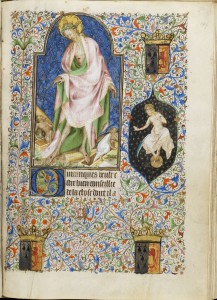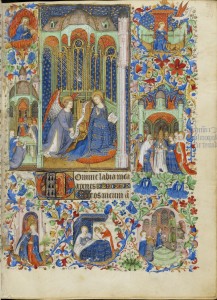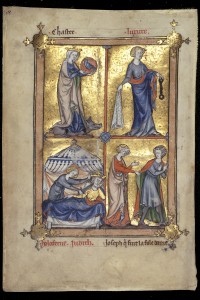Medieval and Renaissance illuminators used different methods to represent clothing and to suggest the human form concealed beneath the draperies. Some artists tinted draperies in dark washes of colour to suggest shadows, leaving bare parchment as highlights. Others indicated the folds and ridges of fabrics with black and white lines. This bold, graphic approach was supplemented in the course of the 12th century by a new painterly technique: gradations of colour were employed to create smooth transitions between highlighted and shaded areas. In his treatise on techniques for various forms of art written probably in Lower Saxony c. 1100-1125, the German monk Theophilus included a long section on the use of colours for draperies, describing the painting of shadow (umbra) and lighter areas (illumina). By the 1280s, French and English illuminators had mastered three-dimensional modelling. Their achievement was unmatched elsewhere until c. 1300 when the Italian painters Cavallini and Giotto employed the same technique in their famous frescos in Rome, Assisi and Padua. In subsequent centuries, illuminators continued to develop the three-dimensional modelling of draperies, employing increasingly sophisticated techniques, such as stippling and hatching.
Related content: Folios
-

The Hours of Isabella Stuart
Folio 127 r
-

The Hours of Isabella Stuart
Folio 136 v
-

The Hours of Isabella Stuart
Folio 141 v
-

The Missal of Cardinal Angelo Acciaiuoli
Folio 148 r
-

The Hours of Isabella Stuart
Folio 199 r
-

The Psalter-Hours of Isabelle of France
Folio 220 r
-

The Pabenham-Clifford Hours
Folio 28 v
-

The Hours of Isabella Stuart
Folio 29 r
-

Leaves from Laurent d’Orléans, La Somme le roi
MS 368